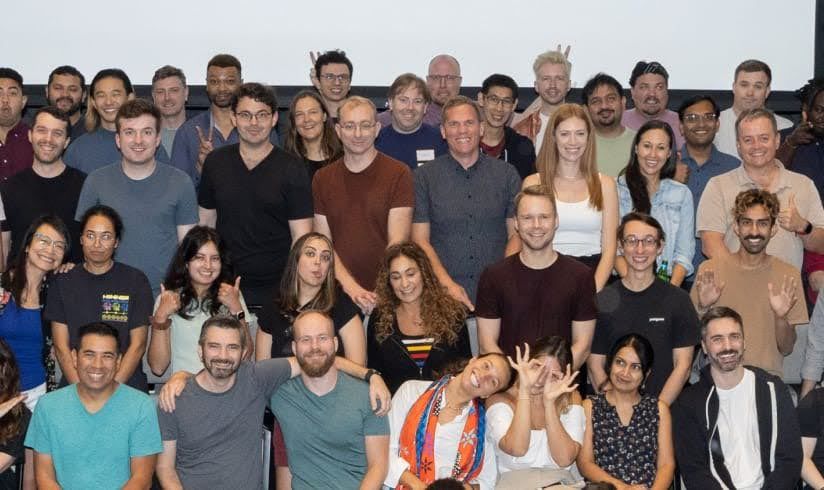How to Launch a Dev-First Startup: First Principles
 Andrew ParkEditorial Lead
Andrew ParkEditorial Lead
Heavybit
Welcome to the first article in our definitive series on how to launch a developer-first startup, featuring advice from veteran founders. Get more time-tested insights from some of the most experienced founders in software here:
- How to Launch a Dev-First Startup: Community & Leadership
- How to Launch a Dev-First Startup: Day-to-Day Tactics
- Technical & Cultural Learnings from 10 Years of Computing
How to Launch a Dev-First Startup from First Principles
Some of the biggest names in developer-first software started from an idea–an idea about an obstacle that blocked developers from accomplishing things they knew should be possible. Building and delivering software for the Web in the early 2000s was painful for a variety of reasons, including the rise of social media and mobile (necessitating responsive design), and the ongoing challenges of setting up increasingly complex infrastructure onto VMs. Then along came Heroku. According to cofounder James Lindenbaum:
Successful startups tend to have a very strong point of view on a particular domain. ‘This is the way. These things aren't being done the right way.’ That point of view has to be strong. It has to be well articulated. And you have to turn out to be right.”
As CI/CD methodology became more popular in the 2010s, dev teams were able to build, deploy, and fork updated production versions back into their main branch faster than ever–but also introduced more challenges for fast-moving software companies working on multiple builds with sprawling, hard-to-manage lists of new features–only some of which were production-ready. Then along came LaunchDarkly. Thinking back on her own experience, and the experiences of other startups she has advised in recent years, cofounder Edith Harbaugh offers:
There's not just one way to build a developer-first company. I think that's really important for people to understand. I think there are different ‘templates.’ You look at Netlify and they have very much a ‘Let's go very broad with bottoms-up’ approach, and that's worked really very well for them. For other companies, if you are targeting not just individual developers, or managers and VPs, you actually need to invest in an enterprise sales force from the very start.”
We’ve compiled direct, honest advice from leaders at some of today’s most successful infrastructure companies for new startup founders. So if you’re wondering whether that one side project you’ve been working on might make a good startup someday, you’ve come to the right place. Below, you’ll find exactly how some of the most experienced software entrepreneurs and operators would advise new founders on strategic first principles, what to look for in an investor, specific tactical considerations, and more. In this article, we’ll cover:
First Principles for Dev-First Startups:
- Identifying Opportunities: How to Know if Your Startup Idea Will Succeed
- Creating a Software-Defined Movement: Building and Growing a Community
- Strategic Leadership Skills: Going Beyond Coding
Step One: First Principles and Startup Strategy
Do this first: Make sure your startup passes this initial, strategic stress test. Are you asking the right questions? Are you positioned to succeed in today’s market, and in the future? And perhaps most importantly: Can you create lasting value?
I. Identifying Opportunities: How to Know if Your Startup Idea Will Succeed
- Ask Tough Questions, Especially About Whether Your Startup Can Scale
- Is Your Startup a Venture-Scale Business?
- Are You Trying to Create a New Category? If so, how?
- Are You Focusing on the Problem or the Solution?
- Scope Your Startup for the Right Time and Market
- Do You Have The Team, Dream, and Steam?
- Are You Ahead of the Market?
- Will Your Startup Have an Economic Impact?
- Create and Focus on Value First
- How Should You View Creating Value vs. Capturing Value?
- Can You Use Value as a North Star to Guide Product Development?
1. How to Know Your Startup Will Succeed
Plenty of ambitious founders would love to start a groundswell movement along the lines of DevSecOps or the Jamstack. But before you can activate a growing community around your world-changing product, you need to know you’re going in the right direction.
a. Is Your Startup a Venture-Scale Business?
Heavybit founding partner and Heroku cofounder James Lindenbaum observes, “People often have identified a problem that's a ‘real problem,’ and have identified a good solution they are confident about. But just because you've identified a problem and have a great solution doesn't necessarily mean it can be a real business.”
“There are lots of market-related reasons why something can be valuable to individual developers but not actually be a good business. And then, even if it can be a business, there's the second question: Is it a venture-scale business? Because there's also an assumption that if your idea should be a business, the next thing you should do is raise money as a startup. What does it look like when we're at venture scale? Can we imagine the product providing that level of value to that number of people? And how are you going to get it to that many people? Those are all important questions. People often oversimplify in their heads: ‘Do the thing, dot-dot-dot, profit.’ But they haven't actually sat down and even thought in a cursory, back-of-the-envelope way about the numbers required and their implications.”

Startup founders visit the Heavybit Clubhouse in 2013. (Image courtesy Wired)
b. Are You Trying to Create a New Category? If so, how?
Some ambitious startup founders set their sights on creating an entirely new category of software–an approach that can yield enormous returns if successful. However, Netlify cofounder Mathias Biilmann Christensen explains that while it can be tempting to put your startup at the center of the universe, no other companies in your space will want to be a part of that market map. “You have to figure out who else is gonna be a really important player in your category. And how you get them on board. Go talk to them, figure out–how do we align around this emerging picture. Sometimes, these companies might even be somewhat competitive, but if there's a need for your category, then even your competitors will need to attach to it in some way. But if you're the only one that benefits, and you're the only one talking about it, it's not going to become a category.”
You have to figure out who else is gonna be a really important player in your category. And how you get them on board. If there's a need for your category, then even your competitors will need to attach to it in some way. But if you're the only one that benefits, and you're the only one talking about it, it's not going to become a category.” -Mathias Biilmann Christensen, Cofounder/Netlify
c. Are You Focusing on the Problem or the Solution?
CircleCI CEO Jim Rose adds, “I think the most important advice would be: ‘Be wedded to the problem, don't be wedded to the solution.’ The solution is going to change. It will evolve as the market changes, technology changes, and people's learnings change. However, the problems tend to be pretty universal.”
The CEO suggests that one key to lasting success for startups is not letting a short-sighted focus on how you solve your customers’ pain get in the way of actually solving your customers’ pain. “The topics have changed a bunch. And how the tooling, the approach, and ultimately what's necessary to get to that validation have all evolved, but it's still the same core problem. So if you can identify the right problem, then you can identify the right way to pinpoint while being flexible about how you solve it. This flexibility just buys you so much more latitude to find success.”

Solve your customers’ problems today, instead of getting caught up in the solution you built yesterday, suggests CircleCI’s Jim Rose. (Image courtesy CircleCI)
2. Timing and Scoping the Market
Other factors to consider when designing your startup include how big a market your product might have today, and how it can grow tomorrow. Is this the right time to launch? Do you have all the things you need to grow?
a. Do You Have The Team, Dream, and Steam?
LaunchDarkly’s Edith Harbaugh offers a simple checklist to help founders understand the early milestones. “I always talk about the trifecta when you're an early-stage startup, of ‘team, dream, and steam.’ So, who's the team? Who are the early founders? Who is on the early team? The dream is your market. What do you put out there in the world? And then, ‘steam’ is traction.”
“So, this is your three-legged stool. If you're extremely lucky, you'll have success out of the gate with customer adoption and be able to get traction quickly. But if you're selling to enterprises, which more and more developer-first companies are, you're not going to be an overnight success.” Harbaugh is pensive about her own startup’s journey and cautions founders to be aware of market conditions for customers and funding. “I remember when I had to tell the team that we couldn't raise our Series A round. We just didn't have the traction at the time. We went out and got more customers so we could do it. But it certainly was not an overnight success. Not the ‘hockey stick’ that people would use to measure them. However, being customer-focused gave us an enduring base to build to 5,000+ paying customers.”
b. Are You Ahead of the Market?
It’s OK to be ambitious enough to be ahead of the markets, suggests Fastly cofounder Simon Wistow, who observes: “We're getting to do the stuff now that we wanted to do 10 years ago, but we've had to wait for the market to catch up. For Fastly, it was one of those ideas you have–when you go around and talk to incredibly knowledgeable people-if everybody thinks it's a good idea, then you do it, and it just makes sense.” Sometimes, Wistow suggests, your intuition can guide you in the right direction. “You kind of feel that there's this inevitability and you just wait for the rest of the world to catch up.”
Software is everywhere. And it's integrated into everything, and it's easier than ever to find a small change that has enormous economic impact. And that means there's great opportunity for building businesses and having a positive impact on the world through writing computer programs.” -David Crawshaw, Cofounder/Tailscale
c. Will Your Startup Have an Economic Impact?
Tailscale co-founder David Crawshaw suggests that properly scoping your project for the right market conditions can make all the difference. “I think software is everywhere. And it's integrated into everything, and it's easier than ever to find a small change that has enormous economic impact. And that means there's great opportunity for building businesses and having a positive impact on the world through writing computer programs.”
3. Creating More Value Than You Capture
Fundamentally, succeeding in developer-first startups comes down to creating value for customers. For a variety of reasons, it’s important to start with what value your startup can provide to developers–then worry later about how much of it you can capture.
a. How Should You View Creating Value vs. Capturing Value?
Crawshaw opines: “You have to think about how you're actually solving someone's problems and give them something worth getting excited about by building something of real value to people. That comes back to the challenge of ‘building a business’ versus ‘building value.’ There's an old saying, ‘Create more value than you capture.’ Creating value that you don't get to capture is not waste.”

Your goal as a founder must be creating more value than you capture, suggests Tailscale’s David Crawshaw. (Image courtesy Tailscale)
Crawshaw clarifies the distinction between creating value–building valuable solutions people need–and capturing value–generating enough revenue from what you’ve built to grow a business. “If you want to take that purely altruistic perspective and say you aren't interested in capturing value, then the reason you’d build a business that captures value is because that business can then go out and build more value. The challenge of building software today is that there are very few pieces of software that one engineer can go out and build. You need a team who can go out and build some big, complex thing. And if you want a team of engineers working on something, well, they need to get paid because they have to live. And that means you need revenue to pay them. And so, there's no fundamental problem with capturing value–because then you can put it to work to make more value. The challenge is: If you focus on capturing value, you might miss the value you can create in the process. They're two different things and they don't always line up.”
The code is just a means to an end to generate something of value. Once you focus on value, then all of a sudden, it's one of those amazingly clarifying moments where you can just start to get rid of things. And you can start to shave things back and really focus on what’s important.” -Jim Rose, CEO/CircleCI
b. Can You Use Value as a North Star to Guide Product Development?
Starting from value can provide tremendous clarity in product development and other strategic concerns. CircleCI’s Jim Rose points out that the lifecycle of a product (and the startup that creates the product) doesn’t abruptly begin or end once coding starts or stops. “Once you realize it's not ‘done’ once you’ve written it, the code is just a means to an end to generate something of value. Once you focus on value, then all of a sudden, it's one of those amazingly clarifying moments where you can just start to get rid of things. You can say, ‘Oh, that's cool. But no.’ And you can start to shave things back and really focus on what’s important.”
More Resources on Early-Stage Startup Strategy:
- Video - Product Strategy for Start-ups with Des Traynor
- Video - Developer Product Design with Cole Krumbholz
- Video - Go-To-Market And Category Design Fundamentals with Jennifer Johnson
The second part of our series on how to found a developer-first startup covers communities and leadership skills - Read now.
The third part of our series focuses on how to manage your mindset and your day-to-day routine - Read now.
Get more learnings from a decade of software development from successful founders and community leaders in our 10-year retrospective.
Content from the Library
Authentic Communities in the Era of AI
In this special Speaker Series event, our panel explores the implications of AI on the effort and ability to build authentic...
How to Launch a Dev-First Startup: Day-to-Day Tactics
Welcome to the third article in our definitive series on how to launch a developer-first startup, featuring advice from veteran...